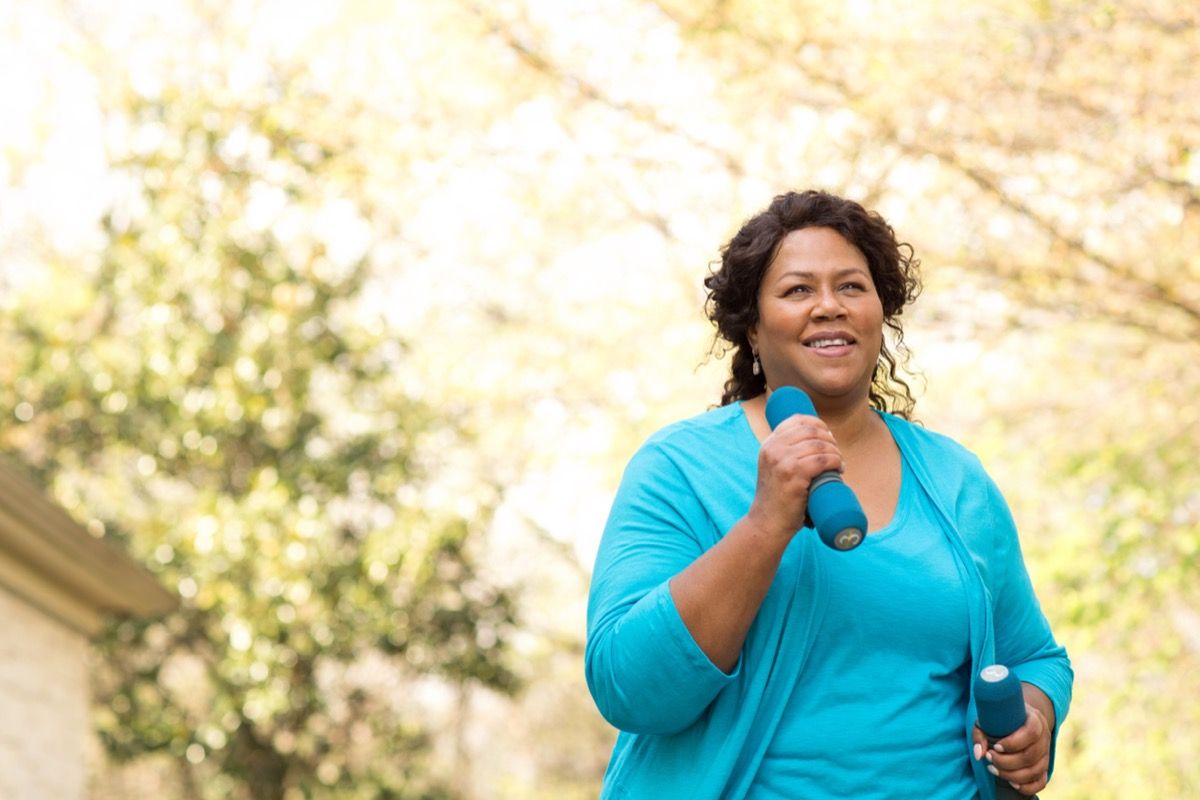Exercise Dramatically Decreases Breast Cancer Mortality Rate
Separating the myths and facts about breast cancer can be hard. While many people think a lump in the breast is the only symptom to watch for, the disease can manifest in other, perhaps surprising, ways. The median age of a breast cancer diagnosis is 62, according to the Breast Cancer Research Foundation (BCRF), but the disease can occur at any age—as with actor Christina Applegate, who made headlines in 2008 when she announced her diagnosis at the age of 36.
The disease is also much more common than many people realize. “In 2020, there were 2.3 million women diagnosed with breast cancer and 685,000 deaths globally,” the World Health Organization reported, calling it “the world’s most prevalent cancer.”
The mortality rate of breast cancer varies according to different factors, but “advances in diagnosing and treating [breast] cancer have led to steadily improving survival rates, so the outlook for women diagnosed today is likely better,” WebMD says. And a new study has found that breast cancer survivors can slash reduce their mortality risk by 60 percent by adding one thing to their daily routine. Read on to find out what it is.
READ THIS NEXT: Eating This One Thing Can Cut Your Cancer Risk in Half, New Study Says.

The so-called “breast cancer genes” BRCA1 and BRCA2, “significantly increase the risk of both breast and ovarian cancer,” Judy C. Boughey, MD told the Mayo Clinic. She recommended speaking to your doctor about genetic testing if you have breast cancer or other cancers in your family’s history. “Still, the majority of people diagnosed with breast cancer have no family history of the disease,” she emphasized. In fact, BreastCancer.org says only five to 10 percent of breast cancers are believed to be hereditary.
What are the other risk factors for the disease? “Researchers have identified hormonal, lifestyle, and environmental factors that may increase your risk of breast cancer,” Boughey explained. “But it’s not clear why some people who have no risk factors develop cancer, yet other people with risk factors never do. It’s likely that breast cancer is caused by a complex interaction of your genetic makeup and your environment.”

When breast cancer occurs, the cells in the breast tissue begin to change and grow uncontrollably, causing a tumor. “Like other cancers, breast cancer can invade and grow into the tissue surrounding your breast [and] can also travel to other parts of your body and form new tumors,” says the Cleveland Clinic. “When this happens, it’s called metastasis.”
Men can get breast cancer, but the Cleveland Clinic explains that this is rare. “Approximately 2,600 men develop male breast cancer every year in the United States, making up less than one percent of all cases,” says the site.
The warning signs of breast cancer can vary, but according to the Centers for Disease Control and Prevention (CDC), symptoms can include a lump in the breast or underarm; pain, redness, or irritation of the skin of the breast area; and nipple discharge or bleeding.

Researchers are frequently making discoveries about how to prevent breast cancer, or decrease your risk of developing the disease.
“Having more fat tissue can increase your chance of getting breast cancer by raising estrogen levels,” the American Cancer Society explains, noting that women who are overweight can often have higher levels of insulin, a condition which is also linked to breast cancer.
One recent study revealed that drinking some diet sodas can spike the risk of certain cancers, including breast cancer. Aspartame, an artificial sweetener, was linked not just to a 22 percent rate of breast cancer, but also increased the risk of obesity-related cancers by 15 percent.
For more health news sent directly to your inbox, sign up for our daily newsletter.

Given that being overweight is linked to breast cancer, it makes sense that obesity is also associated with the mortality rate of survivors.
“Obesity is associated with a 35 percent to 40 percent increased risk of breast cancer recurrence and death and therefore poorer survival outcomes,” according to an article published by The Journal of Clinical Oncology.
And a new study has found that “moderate to high levels of physical activity—equal to about 15 minutes a day—reduced mortality by 60 percent in breast cancer survivors,” reports Medical News Today.

Research has long shown that regular physical exercise has an incredible amount of health benefits, including a decrease in the risk of different kinds of cancer. “Many studies have shown that physically active women have a lower risk of breast cancer than inactive women,” the National Cancer Institute says.
Reina Haque, MD, senior author of a new study published in JAMA Network, told Medical News Today that “The study found that even moderate physical activity was associated with a 60 percent lower risk of death among breast cancer survivors, and results were similar for breast cancer survivors who were more active.”
Effective exercise does not need to be strenuous, Haque emphasized. “Our study shows that breast cancer survivors who exercise at moderate levels, such as walking every day for more than 15 minutes, may experience the same survival benefits as those who do more strenuous exercise,” she said.
" Conservative News Daily does not always share or support the views and opinions expressed here; they are just those of the writer."

Now loading...